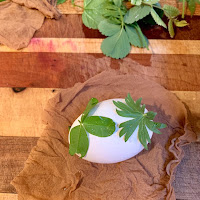On December 3rd, 2020, Bacich School celebrated the conclusion of our unit titled: "My Skin: Evolving Identity " in a first ever school wide webinar. Visual arts is a wonderful, organic way to engage our students in conversation about skin colors, self love, respect for others, race and diversity. The overarching visual arts component integrated literature with the book by author Michael Tyler and illustrator David Lee Csickso "The Skin you Live In." This unit was implemented in all grade levels K-4th grade. Moreover, the art component was inspired by photographer Angelica Dass and her stunning skin color study titled Humanæ. Like Angelica Dass, students engaged in a self-study about their skin color and the skin of their peers, family and community. Students created a self-portrait featuring their skin colors and wrote creative, descriptive names for their skin color. The K-4th grade artwork is featured in our school wide virtual art gallery.
The highlight of this project was having the author Michael Tyler join us for our school wide virtual event. His visit was moving and inspirational. He shared some personal and special stories about why he has chosen a life of activism and acceptance. Later in the day, students shared special comments on what they learned and liked about the author's visit. This powerful experience will help to shape our community in positive ways for many years to come!
Click play on the video below to view "Skin Color Self-Portrait Studies" Kindergarten-1st Grade
I would like to express my deepest gratitude and thanks to everyone involved in supporting this study and making our school wide webinar/author visit with Michel Tyler a huge success. My heart is full from giving and receiving love.
The creative way this entire project came together in the midst of a pandemic and distance/hybrid learning needs to be celebrated! We are forced to look at education in a different way and that is not a bad thing. Through dialogue and discomfort we are taking big steps to make our school more inclusive for ALL students.
Thank You Donors
KSPTA (Books)
Community ArtsKitchen (Books)
Jenny Novack (Books)
Jennifer Ball (Inclusive Language Totes)
Credits
Michael Tyler (Author “The Skin You Live In” )
Angelica Dass (Photographer “Humanae Project”)
David Lee Csicsko (Illustrator “The Skin You Live In”)
Raquel Rose (Superintendent KSD)
Mary Ann Spitzer (Principal Bacich)
Wendy Holmes (Assistant Principal KSD)
Andrew Korff (Technology)
Bacich Social Justice Committee
Barbara Libby-Steinmann (Chair)
Thalia Milano (Chair)
Erica Johnson
Kerri Baetkey
Marty Ross
Maria Martin
Susan Warnick
Becky Poon (Music Coordinator)
Marjorie Bukowski (Teacher)
Anna Rochester (Visual Arts Coordinator)
Cindy Lauper (Artist, “True Colors”)
Louis Armstrong (Artist, “What A Wonderful World”)
Bacich Students
KSPTA
Click play on the video below to view "Skin Color Self-Portrait Studies" 2nd - 4th Grade
Action Steps:
Social Justice Elements:
Element 5: Awareness Raising
Element 6: Social Action Conclusion References
We pledge to donate a copy of “The Skin you Live In” to all Elementary Schools in Marin County.
For their next visual arts project Bacich Bears will design bookmarks. Students may choose a social justice theme to illustrate and decorate their bookmarks or they may draw their faces with a description of their skin like those written by author Michael Tyler: “I have milky chocolate pudding skin. How about you?” Bookmarks will be tucked into our donated books along with a copy of “Skin” lesson plan the Bacich Social Justice team has developed. Books will be delivered in the “Inclusive Language” totes.












































